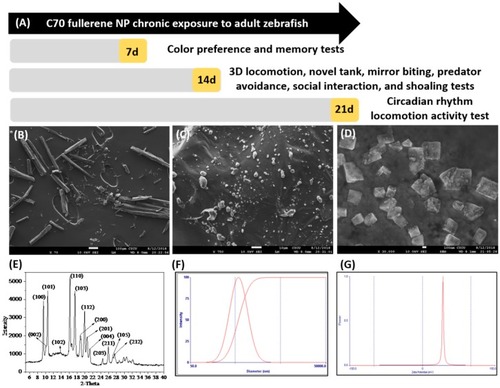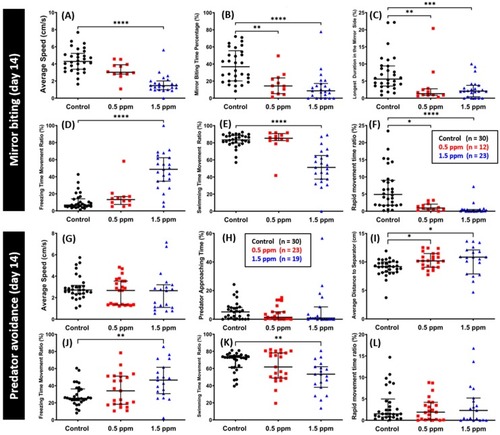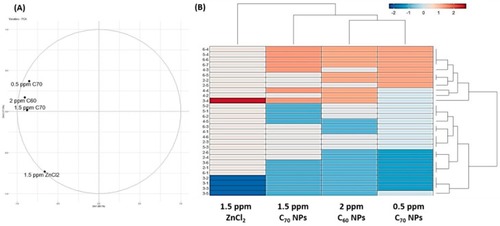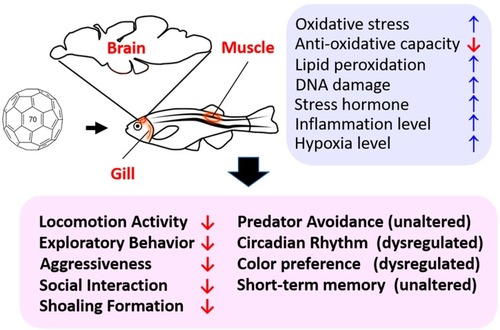- Title
-
Behavioral Impairments and Oxidative Stress in the Brain, Muscle, and Gill Caused by Chronic Exposure of C70 Nanoparticles on Adult Zebrafish
- Authors
- Sarasamma, S., Audira, G., Samikannu, P., Juniardi, S., Siregar, P., Hao, E., Chen, J.R., Hsiao, C.D.
- Source
- Full text @ Int. J. Mol. Sci.
|
( |
|
Comparison of behavior endpoints between the untreated control and C70 NP-exposed zebrafish in 3D locomotion and novel tank tests after 14-day exposure. ( |
|
Comparison of mirror biting and predator avoidance behavior endpoints between the untreated control and C70-exposed fish after 14-day exposure. ( |
|
Comparison of social interaction and shoaling behavior endpoints between the untreated control and C70 NP-exposed fish after 14-day exposure. ( |
|
Comparison of color preferences between the untreated control and 1.5 ppm of C70 NP-exposed fish: ( |
|
The short-term memory and circadian rhythm assay for the untreated control and C70 NP-exposed fish after 7- and 21-day exposure, respectively. ( |
|
Comparison of behavioral alterations in zebrafish after exposing to either C60 NPs, C70 NPs or ZnCl2. ( |
|
Schematic diagram showing the detrimental effects of chronic exposure of C70 nanoparticles on adult zebrafish. The corresponding behavioral alterations (pink color) and biochemical alterations in the brain tissue (blue color) after C70 nanoparticles exposure are summarized. |








